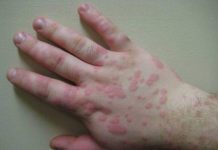Oral thrush is an unpleasant fungal infection that can occur in your mouth and that needs to be treated.
If you’ve never heard of oral thrush, understanding the infection is going to be important to treating it correctly in your child.
How to spot oral thrush?
As mentioned above, oral thrush is a type of fungal infection. That sounds pretty nasty but the symptoms can be equally disturbing.
You’ll be able to see white lesions that are similar to cottage cheese inside your child’s mouth. These lesions are found on the inner cheeks, the roof of the mouth, on the tongue, and sometimes even on the tonsils. Sometimes these lesions can be painful but not always.
Should I Worry?
When oral thrush happens to our children, we’re always going to worry. Of course, the risks involved with oral thrush are fairly minimal.
The fungal infection can spread into the esophagus which can make swallowing a challenge but, overall, oral thrush is more of a nuisance than a cause for anxiety. Plus, oral thrush is usually fairly easy to treat in children.
Treating Kids
Children who have oral thrush may not need any medical treatment at all but you should take your little one to see a physician first. If the child is otherwise healthy, the fungal infection should run its course.
You might be able to speed up the process by feeding your son or daughter some yogurt that does not include any added sweetener. The yogurt’s bacteria can help the balance to be regained in your child’s mouth.
Sometimes physicians will prescribe medication for the treatment of oral thrush in children. The doctor may also want to look for other health problems which can sometimes increase the risk of developing oral thrush, such as diabetes.
Most Common Cause
While the signs of oral thrush could point to a more serious health problem, the majority of infants who develop the fungal infection get it from their mothers.
If the mom had a vaginal yeast infection around the time of delivery, the fungus could have been passed onto the child and developed into oral thrush.
Sometimes nursing babies can also give the infection to their mothers then they can get it back from nursing. Breaking this cycle usually means treating both the mom and the infant simultaneously.












